There are many types of hearing aids, such as behind-the-ear (BTE), in-the-ear (ITE) and in-the-canal (ITC). Selecting a type that’s right for you depends on a number of factors, including the severity of hearing loss, size and shape of your ear, personal preferences, ease of handling and new hearing aid technologies.
There are many different types of hearing aids. Each type has its own advantages and limitations. Selecting a hearing aid that’s right for you depends on a number of factors, including:
Cleveland Clinic is a non-profit academic medical center. Advertising on our site helps support our mission. We do not endorse non-Cleveland Clinic products or services. Policy
Many of the latest hearing aids are rechargeable. You can even connect them to smartphones and other devices using Bluetooth® technology.
Healthcare providers categorize hearing aids into five types: behind-the-ear (BTE), in-the-ear (ITE), receiver-in-the-ear (RITE), in-the-canal (ITC) and CROS/BiCROS.
Behind-the-ear (BTE)
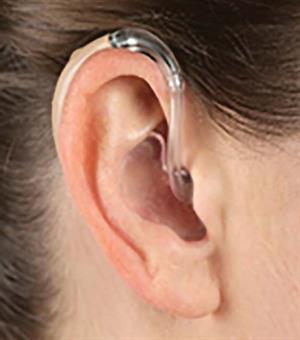
Behind-the-ear (BTE) devices are appropriate for people with a wide range of hearing loss, from mild to profound. This device fits neatly behind your ear. The body of the hearing aid attaches to a custom ear mold or thin tubing. Because this device has several parts, manual dexterity is necessary to ensure proper insertion and placement.
In-the-ear (ITE)
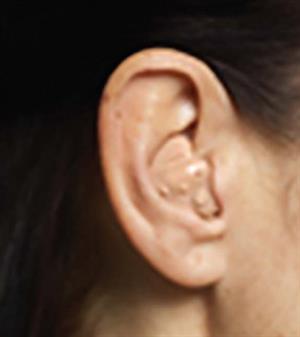
In-the-ear (ITE) devices fill either your entire ear (known as full-shell) or a portion of the bowl (known as half-shell) of your ear. These are best for people who may have dexterity issues or difficulty handling small items. Providers often recommend ITE devices for people with moderate to severe hearing loss.
Receiver-in-the-ear (RITE)
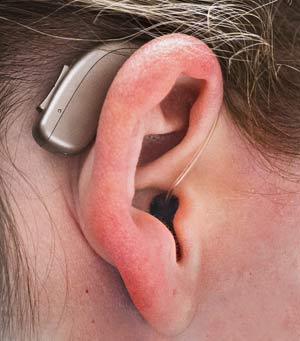
Receiver-in-the-ear (RITE) hearing aids are similar to BTE devices. The body of a RITE hearing aid sits behind your ear. A thin receiver wire extends from the body of the hearing aid over your outer ear and into your ear canal. A soft tip sits just inside of your ear canal without sealing it. For many people, this offers a more natural sound. RITE devices require manual dexterity. They’re appropriate for mild to severe hearing loss.
In-the-canal (ITC)
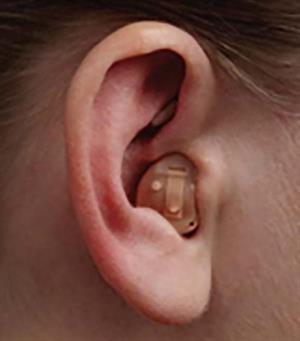
In-the-canal (ITC) hearing aids fit more deeply into your ear canal than ITE hearing aids, so they’re typically less visible. Because of their smaller size, they use smaller batteries and may be more difficult to handle. Depending on your situation, you may even qualify for completely-in-the-canal (CIC) hearing aids. These devices fit deeper into the ear canal so they’re even less visible.
CROS/BiCROS
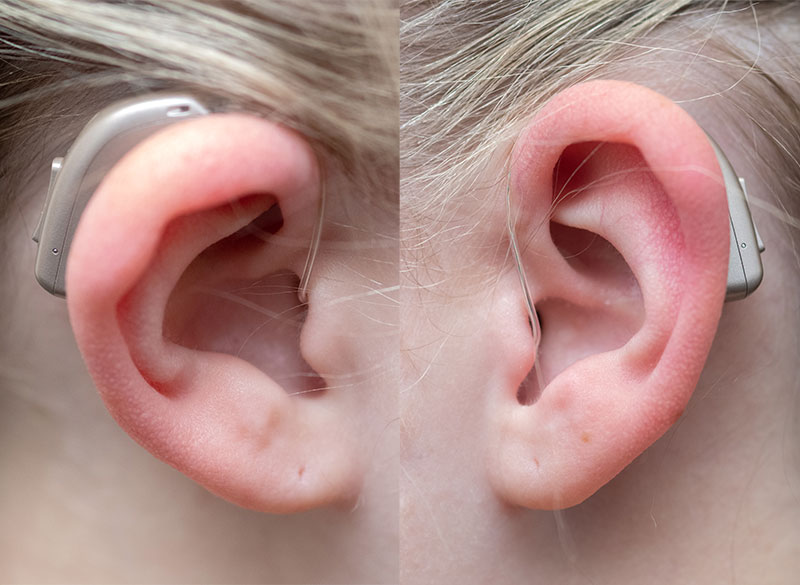
Your healthcare provider may recommend a CROS/BiCROS hearing aid if you have normal hearing or minimal hearing loss in one ear, and very little or no usable hearing in the other ear. You wear the hearing aid on the better hearing side, and you wear an additional microphone on the poorer hearing side. This allows you to hear from the poorer side — even though it delivers all sounds to your better ear. These devices are especially beneficial when someone is talking on the side of the poorer ear. CROS stands for “Contralateral Routing of Signals.” BiCROS stands for “Bilateral Contralateral Routing of Signals.”
On August 16, 2022, the U.S. Food and Drug Administration (FDA) ruled to improve access to hearing aids by making a new category for over-the-counter devices. As a result of this historic ruling, people will be able to purchase hearing aids over the counter as soon as fall of 2022.
Over-the-counter hearing aids will be appropriate for many people with mild to moderate hearing loss. But if you have severe to profound hearing loss or complex hearing conditions, you’ll need to see a healthcare provider for appropriate testing, diagnosis and treatment.
Hearing aid batteries come in disposable and rechargeable. Disposable batteries — which look like little buttons — aren’t that common anymore.
Most new hearing aids run on rechargeable batteries. Similar to smartphones and other Bluetooth devices, you simply place hearing aids with rechargeable batteries on a charger when you’re not using them. Some even come with a convenient docking station.
There are so many types of hearing aids on the market, selecting the one that’s right for you can feel overwhelming. The good news is that your healthcare provider can help you choose a device based on your specific health condition and situation, including the best type of hearing aid for:
For some people, hearing aids aren’t sufficient. If you have severe or profound hearing loss, you may have better success with cochlear implants or bone-anchored auditory implants. Ask your healthcare provider about treatment options.
If you have hearing loss that’s interfering with your quality of life, schedule an appointment with your healthcare provider. They can establish the extent of your hearing loss and determine whether hearing aids could help.
If you already have hearing aids, be sure to get them checked by an audiologist at least twice a year. An audiologist is a healthcare provider who specializes in diagnosing and treating hearing loss, balance disorders and more. You should also have your hearing tested whenever you notice new symptoms or a change in hearing.
If you’re considering hearing aids, here are some questions you may want to ask your healthcare provider:
A note from Cleveland Clinic
If you’re considering hearing aids, there are several types to choose from. Ask your healthcare provider or audiologist about your options. They can help you find a hearing aid that’s tailored to your specific needs so you can live a fuller life.
Last reviewed by a Cleveland Clinic medical professional on 09/12/2022.
Learn more about our editorial process.
Cleveland Clinic is a non-profit academic medical center. Advertising on our site helps support our mission. We do not endorse non-Cleveland Clinic products or services. Policy